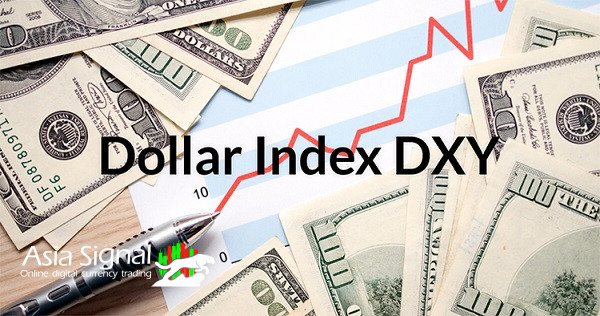The Evolution and Significance of the Dollar Index: A Comprehensive Analysis
In the complex realm of international finance, the Dollar Index stands as an essential benchmark that provides insights into the relative strength of the United States dollar (USD) against a basket of other major currencies. Born out of the need to quantify the dollar's performance and influence in the global economic landscape, the Dollar Index has evolved over time to become a critical tool for economists, investors, and policymakers. This article delves into the history, methodology, significance, and future prospects of the Dollar Index, shedding light on its lasting impact on the world of finance.

1. Historical Context and Evolution
The origins of the Dollar Index can be traced back to the aftermath of World War II and the Bretton Woods Agreement of 1944. As nations sought to rebuild their economies and establish a stable global monetary system, the US dollar emerged as the primary reserve currency, backed by gold. The exchange rates were fixed, and the dollar's value was pegged to gold. However, this system faced challenges, leading to the collapse of the Bretton Woods system in the early 1970s.
Amidst the turmoil, the US Dollar Index, commonly known as DXY, was introduced in 1973 by the Intercontinental Exchange (ICE). The index was designed to reflect the value of the US dollar against a basket of six major currencies: the euro (EUR), Japanese yen (JPY), British pound (GBP), Canadian dollar (CAD), Swedish krona (SEK), and Swiss franc (CHF). The initial value was set at 100, and changes in the index value were intended to provide insight into the dollar's performance relative to these key trading partners.
2. Methodology and Calculation
The methodology behind the Dollar Index involves a geometric weighted average of the exchange rates between the US dollar and the selected basket of currencies. This ensures that each currency has a proportional impact on the index's value, preventing any single currency from dominating the index's movement.
The formula for calculating the Dollar Index is as follows:
Dollar Index = 50.14348112 × EURUSD^(-0.576) × USDJPY^(0.136) × GBPUSD^(-0.119) × USDCAD^(0.091) × USDSEK^(0.042) × USDCHF^(0.036)
Where:
- EURUSD: Euro to US Dollar exchange rate
- USDJPY: US Dollar to Japanese Yen exchange rate
- GBPUSD: British Pound to US Dollar exchange rate
- USDCAD: US Dollar to Canadian Dollar exchange rate
- USDSEK: US Dollar to Swedish Krona exchange rate
- USDCHF: US Dollar to Swiss Franc exchange rate
3. Significance and Interpretation
The Dollar Index holds significant implications for various stakeholders in the global financial arena:
A. Investors and Traders: The Dollar Index serves as a valuable tool for investors and traders engaged in currency markets, as it provides insights into the relative strength of the US dollar against other major currencies. Movements in the index can signal shifts in sentiment and expectations, influencing trading strategies and investment decisions.
B. Central Banks and Monetary Policy: Central banks around the world monitor the Dollar Index closely to gauge the competitiveness of their own currencies and assess potential impacts on their economies. Changes in the index can influence decisions regarding interest rates, currency interventions, and monetary policy adjustments.
C. International Trade and Commerce: The Dollar Index plays a crucial role in international trade by affecting exchange rates. A strong dollar can make US exports more expensive for foreign buyers, potentially impacting trade balances and economic growth.
D. Global Financial Stability: The index's fluctuations can impact global financial stability. Sharp and sustained movements in the Dollar Index can lead to capital flows and financial market volatility, affecting both emerging and developed economies.
4. Criticisms and Limitations
While the Dollar Index offers valuable insights, it is not without its criticisms and limitations:
A. Limited Currency Basket: The Dollar Index's currency basket might not fully represent the diversity of global trade relationships. Emerging market currencies and other significant players in the international arena are excluded from the basket.
B. Weighting System: The geometric weighting system assumes that the economic significance of each currency remains relatively stable over time. However, economic dynamics change, and this can lead to the index not fully capturing shifts in trade relationships.
C. Overemphasis on Exchange Rates: The Dollar Index primarily focuses on exchange rates and does not take into account other factors that might influence a currency's value, such as economic fundamentals or geopolitical developments.
5. Future Prospects and Adaptations
As the global financial landscape continues to evolve, the Dollar Index may need to adapt to remain relevant. Potential future developments could include:
A. Inclusion of Emerging Market Currencies: As emerging economies play an increasingly significant role in global trade and finance, expanding the currency basket to include more emerging market currencies could enhance the index's representation.
B. Incorporation of Economic Factors: Integrating economic indicators and factors beyond exchange rates, such as inflation, GDP growth, and interest rates, could provide a more comprehensive assessment of currency strength.
C. Influence of Digital Currencies: The rise of digital currencies and the potential issuance of central bank digital currencies (CBDCs) could introduce new dynamics to the global currency landscape. The Dollar Index might need to consider their impact on the traditional currency mix.

Conclusion
The Dollar Index stands as a testament to the complex interplay between currencies, economics, and geopolitics. Its evolution from a post-World War II economic landscape to a modern tool for gauging the dollar's strength reflects the ongoing changes in the global financial ecosystem. While the Dollar Index has its limitations, its continued relevance and adaptation will likely be crucial in understanding the intricate relationships between currencies and their impacts on the world economy in the years to come.
The best Crypto signal leaks ,only in Asiasignal

















Comments